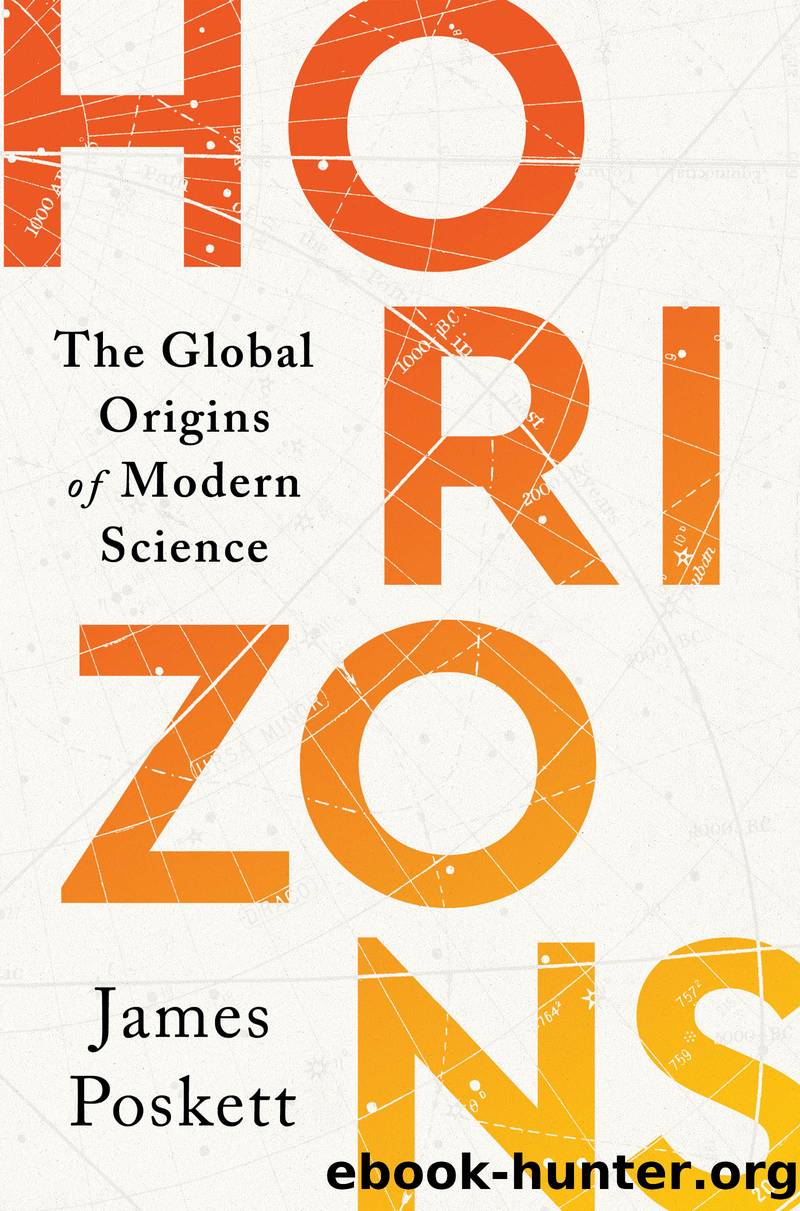Horizons by James Poskett

Author:James Poskett
Language: eng
Format: epub
Publisher: HarperCollins
Published: 2022-02-02T00:00:00+00:00
Jagadish Chandra Bose went on to become one of the most famous physicists of the late nineteenth century. Following his lecture at the Royal Institution, he was invited to speak across the world, including at the Prussian Academy of Sciences in Germany and Harvard University in the United States. As we saw at the start of this chapter, Bose also attended the First International Congress of Physics in Paris in 1900. He published in leading scientific journals, received a number of patents for his radio designs, and in 1920 was made a Fellow of the Royal Society. Yet despite all these achievements, Bose has today largely been forgotten outside of India. This in part is a consequence of the legacies of colonialism and racism, something Bose spent much of his own life fighting against. But it is also a consequence of the failure to consider the history of science in India as part of a broader global story. Much as weâve seen elsewhere, the development of the modern physical sciences in India was fundamentally shaped by the growth of industry, nationalism, and war.61
In order to understand the history of science in late nineteenth-century India, we need to begin by looking at the changing nature of colonial rule. In 1858, the year Bose was born, the British Crown took formal control of the Indian colonies, which had previously been governed by the East India Company. This marked the beginning of the British Raj, which lasted until Indian independence in 1947. With formal colonial rule came a number of new scientific institutions. Just prior to the formation of the British Raj, the East India Company had established the first three universities in India, in the cities of Calcutta, Madras, and Bombay. These were then followed by a number of new universities created under the British Raj, including the University of the Punjab in 1882 and the University of Allahabad in 1887. The expansion of higher education in India was part of a colonial programme to supply graduates to work in the Indian Civil Service. Many of the posts required some kind of scientific training, whether that was working for the Geological Survey of India analysing mineral ores or in the Meteorological Department monitoring the weather.62
At the same time, the expansion of colonialism in India coincided with a period of industrialization. This was again partly a consequence of the transition from East India Company to Crown rule. Whereas the East India Company held a monopoly on trade with India, the British Raj opened up the region to much greater capital investment. British and Indian investors put their money into railways and factories, and by the early twentieth century the colonial government was explicitly promoting âthe strength which an industrialised India will bring to the power of Empireâ. By 1900, Calcutta had been transformed into an industrial metropolis, with steamships going up and down the Hooghly River and jute mills supplying the world market for cloth and cordage. As elsewhere, electricity was widely considered a marker of industrial modernity.
Download
This site does not store any files on its server. We only index and link to content provided by other sites. Please contact the content providers to delete copyright contents if any and email us, we'll remove relevant links or contents immediately.
| Civilization & Culture | Expeditions & Discoveries |
| Jewish | Maritime History & Piracy |
| Religious | Slavery & Emancipation |
| Women in History |
Cecilia; Or, Memoirs of an Heiress — Volume 1 by Fanny Burney(32434)
Cecilia; Or, Memoirs of an Heiress — Volume 2 by Fanny Burney(31868)
Cecilia; Or, Memoirs of an Heiress — Volume 3 by Fanny Burney(31852)
The Secret History by Donna Tartt(18840)
Sapiens: A Brief History of Humankind by Yuval Noah Harari(14244)
Leonardo da Vinci by Walter Isaacson(13179)
The Radium Girls by Kate Moore(11921)
Sapiens by Yuval Noah Harari(5293)
How Democracies Die by Steven Levitsky & Daniel Ziblatt(5127)
The Wind in My Hair by Masih Alinejad(5033)
Homo Deus: A Brief History of Tomorrow by Yuval Noah Harari(4820)
Endurance: Shackleton's Incredible Voyage by Alfred Lansing(4676)
The Silk Roads by Peter Frankopan(4456)
Man's Search for Meaning by Viktor Frankl(4419)
Millionaire: The Philanderer, Gambler, and Duelist Who Invented Modern Finance by Janet Gleeson(4374)
The Rape of Nanking by Iris Chang(4136)
Joan of Arc by Mary Gordon(4013)
The Motorcycle Diaries by Ernesto Che Guevara(4009)
Hitler in Los Angeles by Steven J. Ross(3900)
